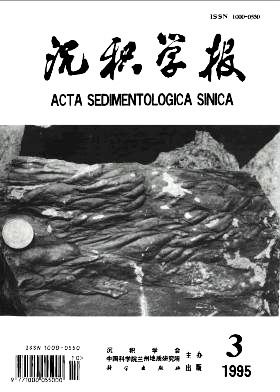A New Method on the Quantitative Study of Depositional and Erosional Processes of Sedimentary Basins──An Application of Wave Process Analysis during Basin Evolution
- Received Date: 1994-10-20
- Publish Date: 1995-09-10
Abstract: The authors established a new method for the quantitative study of the depositional and erosional processes of sedimentary basins by the analysis method of wave process in basin evolution combining with the case study of the Huanghua Depression directed by Prof. Vladimir Shpilman. Prof. Zhang Yiwei and Prof. Vladimir Shpilman pointed out in 1982-1983 that the interference of a series of identical cyclic processes may result in a non-cyclic process, i. e., the observed spacious cyclic process called as sedimentary cycle or rhythm is the interference result of a number of wave processes with a cerium cycle and amplitude. Astronomy has proven that the cycle of solar system's revolution around the Galaxy is 200Ma, and geoscience shows that 60-70Ma, 30Ma are the important cycles to the earth evolution, mantle' s convection and organic evolution. These cycles control the evolution of a sedimentary basin, and there are still other cycles, such as 10, 7, 5, 3, 1, 0.65Ma which affect the evolution of the basin. During the revolution and rotation of the earth, the obliquity of the ecliptic and precession change regularly with cycles of 10×104, 4×104, 2×104 years. This is the famous Milankovitch theory which supports to study the high frequency wave processes and to predict the distribution of source rocks, reservoirs and cover beds.If Function F(t) that can describe the depositional and erosional processes of a basin has been obtained by the Study of strata data, including outcrop, drilling and well logging, the primarythickness of the observed strata is F(t), here t. and t refer to the starting and ending times of basin evolution, respectively, whereas the erosed thickness of a hiatus is, F (t), here t1 and t2 refer to the stuning and ending times of the hiatus, respectively.In order to complete the studies mentioned above, the following steps are prerequisite, (1)the selection of areas for study, (2)the statistics of raw data for every area, (3)the trasformation from lithology thichness section to Lithology- time section, (4) restoring the primary thickness and calculating the depeitonal rate, (5)drawing the curve of depositional rate, (6)establishing the wave equation. The reliability of raw data is the key to success. The restoration of primary thickness and calculation of depeitional rate require the study of subsidence history and the determination of strata age. And the use of sliding window is the effective means to separate cyclic waves. The analysis and calculation have proven that the erosion quantity of O2 in the Huanghua area of the Huabei platform is 220m, whether or not there is a depositional process in the Triassic in the Huabei platform is still an arguement. It is made out by us that there is a 15.5m of the Triassic deposit and erosional quantity of the platform in the Cretaceous is 128m. Another obvious advantage of this method is that it can tell you whether or not there is a depositional process during the period of hiatus, for example, three small scale dePOsitional processes from O3 to C1 may be seen from Fig. 3.
| Citation: | Liu Guochen, Jin Zhijun, Li jingchang. A New Method on the Quantitative Study of Depositional and Erosional Processes of Sedimentary Basins──An Application of Wave Process Analysis during Basin Evolution[J]. Acta Sedimentologica Sinica, 1995, 13(3): 23-31. |






 DownLoad:
DownLoad: